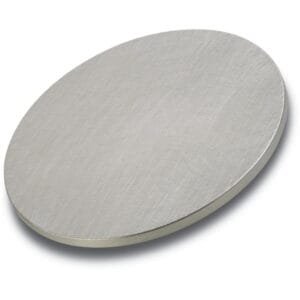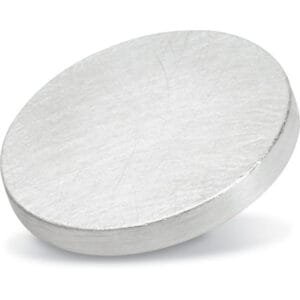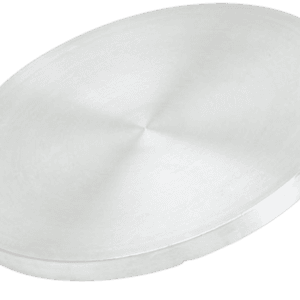Product Overview
Our high-purity Ruthenium Oxide sputtering targets, made from dark black RuO₂, are crucial for thin-film applications in electronics, optics, and energy storage. Ruthenium Oxide is renowned for its outstanding electrical conductivity and stability at elevated temperatures, making it well-suited for challenging industrial uses.
Related Product: Ruthenium Sputtering Target
Specifications
| Chemical Formula | RuO2 |
| CAS Number | 12036-10-1 |
| Purity | Options from 99.9% to 99.999% |
| Molecular Weight | 133.07 g/mol |
| Appearance | Solid, dark black |
| Melting Point | 1,200°C |
| Density | 6.97 g/cm³ |
| Sputter | RF, DC |
| Available Sizes | Diameter up to 14 inches, Thickness ≥ 1 mm; custom sizes available upon request. |
Key Properties and Applications
Properties:
- Conductivity: Ruthenium Oxide is celebrated for its exceptional electrical conductivity, making it ideal for use in electrodes and various electronic applications.
- High-Temperature Stability: This material maintains its performance even under high temperatures, making it suitable for high-temperature electronic devices.
- Mechanical Strength: Ruthenium Oxide offers impressive wear and corrosion resistance, which enhances the durability of components coated with this material.
Applications:
- Electronic Devices: Ruthenium Oxide sputtering targets are pivotal in fabricating electronic devices, where they are used to create conductive films, including electrodes and conductive layers. This is essential for manufacturing high-performance semiconductors, capacitors, and other critical electronic components.
- Optical Coatings: Due to their excellent optical properties, Ruthenium Oxide sputtering targets are widely utilized in producing optical coatings such as anti-reflective and mirror coatings. These coatings enhance the performance of optical devices.
- Energy Storage: In energy storage applications, Ruthenium Oxide sputtering targets are crucial for developing high-performance batteries, including supercapacitors and lithium-ion batteries. The material’s conductivity and thermal stability improve battery performance and longevity.
- Sensor Technology: Ruthenium Oxide is employed in sensor technology, particularly in high-temperature and harsh environments, where its stability and conductive properties make it an ideal choice for reliable sensor materials.
- High-Temperature Electronic Devices: Thanks to its thermal stability, Ruthenium Oxide sputtering targets excel in producing high-temperature electronic devices, catering to specific environmental requirements.


 MSDS File
MSDS File



Reviews
There are no reviews yet.